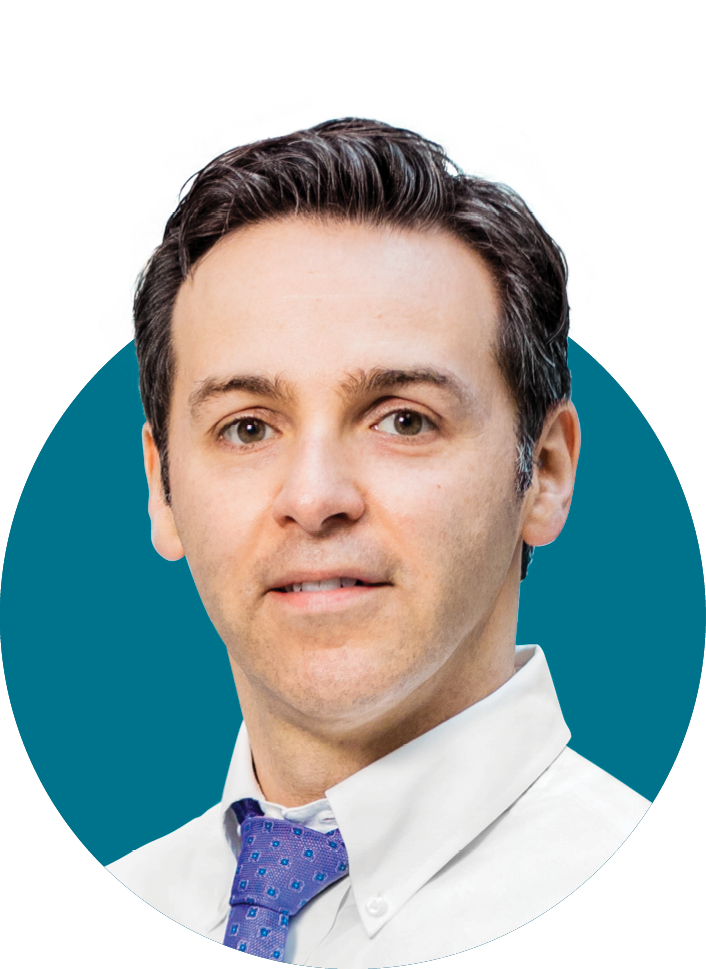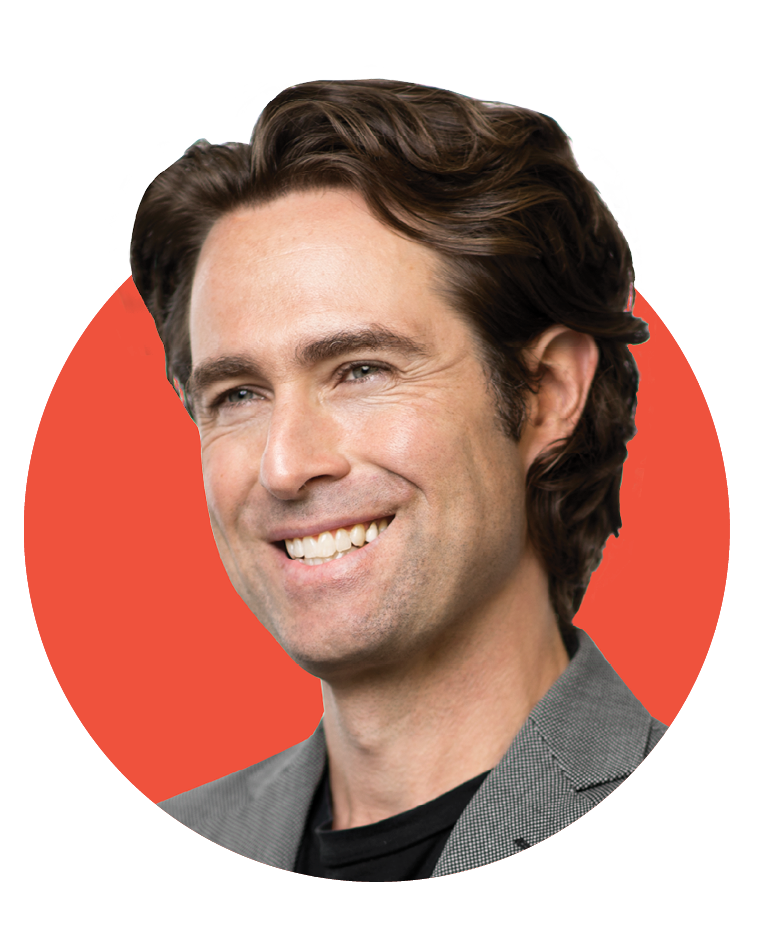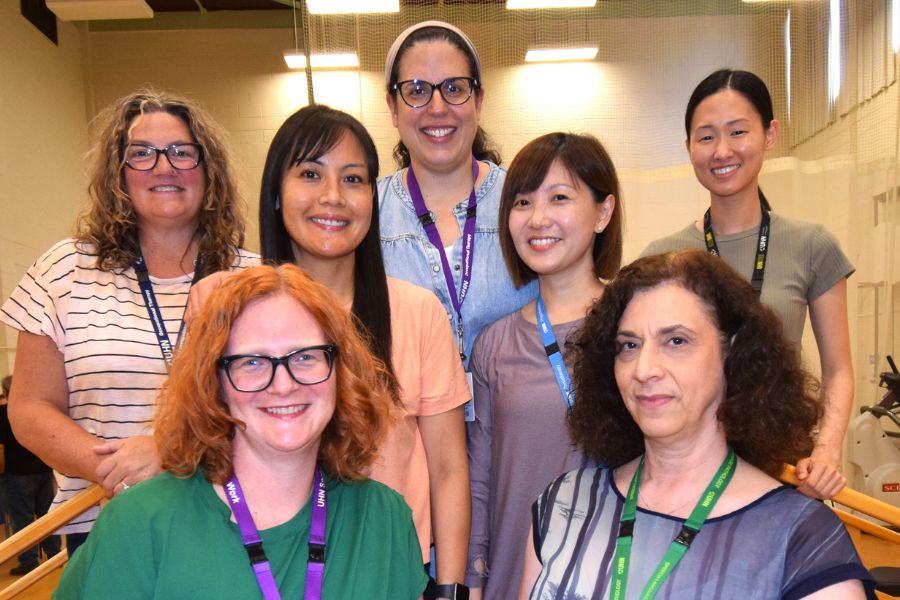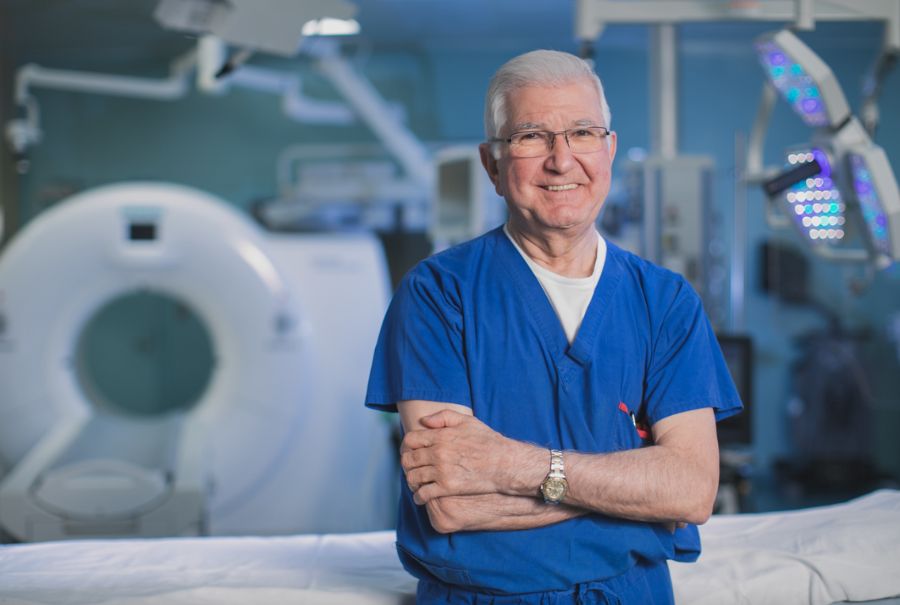By Anna Sharratt
Research drives the majority of the Peter Munk Cardiac Centre’s world-leading innovations. Here’s what a few of the Centre’s researchers are working on.
The Peter Munk Cardiac Centre’s renowned physicians and researchers are focused on doing whatever it takes to ensure timely and individualized patient care. Researchers are now harnessing data and artificial intelligence (AI) to not only develop new treatments but also hopefully one day eliminate heart disease altogether.

The predictor
Dr. Slava Epelman, Cardiologist at the Peter Munk Cardiac Centre, scientist at the Ted Rogers Centre for Heart Research and Loretta Rogers Chair in Immuno-Bioengineering.
The goal: Combatting viral infections that impact the heart.
The Research: People don’t realize that viruses such as hepatitis or, in rare cases, a cold, can attack the heart, but thanks to Dr. Slava Epelman, that’s changing.
Dr. Epelman, who was recently named one of the most highly cited researchers around the world, and his team are conducting research into how viruses attack the heart and how cardiac immune cells regenerate after injury. After a heart attack, the heart uses immune cells to remove dying tissue and promote healing, but some can also cause heart failure.
He’s using AI to analyze the genes from these immune cells and develop algorithms that can predict what a patient’s heart might do after it’s damaged. “We’re trying to understand why some people can be fine for a long time, while others get worse quickly,” he explains.
With COVID-19, this research has become more critical. “There’s a huge percentage of COVID-19 patients with no previous health conditions getting MRIs months later, and about 80 per cent have heart involvement,” he says. Once cardiac risk factors for COVID-19 are identified, Dr. Epelman and his team will study therapies, such as inflammation-reducing medications.

The developer
Dr. Adriana Luk, Advanced heart failure and transplant cardiologist, and intensivist at the Peter Munk Cardiac Centre.
The goal: Improving care for patients with cardiogenic shock.
The Research: Dr. Adriana Luk has seen too many patients arrive at the hospital suffering from cardiogenic shock, which happens when the heart cannot pump enough blood and oxygen to the brain, kidneys and other organs.
This condition, often brought on by a heart attack or abnormal heart rhythm, can quickly become fatal. In the most serious cases, a heart transplant or left ventricular assist device implantation is needed.
Dr. Luk wants to take the guesswork out of the process. She’s created a system for assessing patients with suspected cardiogenic shock and is collaborating with CorHealth Ontario and 16 hospitals across the province to develop a standardized model for cardiogenic shock management.
A cardiogenic shock registry will also allow clinicians to take preventive measures for those at risk and drive research studies that evaluate the success of treatment. “Patients should be able to access care irrespective of what hospital they end up at,” she says. “We need to get the patient the right support.”

The Learner
Dr. Douglas Lee, Cardiologist at the Peter Munk Cardiac Centre, scientist at the Ted Rogers Centre for Heart Research and Ted Rogers Chair in Heart Function Outcomes
The goal: Understanding the effect of ethnicity and race on heart disease.
The Research: Why are some people more at risk for heart disease than others? While one’s lifestyle makes a difference, other factors play a role too.
Dr. Douglas Lee’s research aims to understand how factors like ethnicity and race determine cardiovascular health of the population. In a study of 900,000 Ontarian immigrants, he found that Black men and West Asian women were hospitalized for cardiac failure the most.
His work is important because most physicians aren’t fully aware of how ethnicity and race can impact cardiovascular issues. “If we had a better way to identify heart failure patients earlier, we might have fewer hospitalizations,” he says.
He’s examining how patients with different backgrounds are treated, whether they have to be readmitted later and whether low-risk patients are overtreated.
With this information, Dr. Lee is developing a mathematical model to help physicians determine how to best treat and prevent heart failure events from occurring. “We want to harness AI to make decisions around heart failure,” he says. “We’re trying to prevent it from happening in the first place.”

The risk reducer
Dr. Husam Abdel-Qadir, Cardiologist at the Peter Munk Cardiac Centre and scientist at the Ted Rogers Centre for Heart Research.
The goal: Protecting the hearts of patients with breast cancer.
The Research: While Canada has some of the best cancer survival rates in the world, many survivors have a heightened risk of developing heart disease from their cancer treatments. Chemotherapy drugs designed to kill cancer cells can end up damaging heart muscle cells in the process.
Recognizing that the most common cause of death for breast cancer survivors is heart disease, Dr. Husam Abdel-Qadir is working to identify which women are at the highest risk so cancer treatment can be modified early. He recently found an association between statins (a class of drugs commonly used to lower cholesterol and reduce the risk of heart disease and stroke) and the risk of heart failure among women with early-stage breast cancer.
The study revealed that the risk of hospitalization or an emergency department visit in which heart failure was the most responsible diagnosis was significantly lower among women who were on a statin. A trial assessing statin use at the start of chemotherapy for high-risk women is the next step. “Our findings help build greater awareness for this new field of research,” explains Dr. Abdel-Qadir. “Most importantly, it allows us to help more cancer patients at risk of heart damage.”

The analyzer
Dr. Patrick Lawler, Cardiologist at the Peter Munk Cardiac Centre.
The goal: Uncovering the connection between sepsis and cardiovascular complications.
The Research: Most people have no idea that sepsis, a life-threatening condition in which a body attacks its own tissues and organs in response to an infection, kills one in 18 Canadians every year. Research now suggests that the profound insult of sepsis may lead to an increased risk of heart disease that may last for years following this initial infection. Why? Dr. Patrick Lawler is trying to find out.
He recently conducted an analysis of studies, which included two million patients with sepsis, to analyze mortality risk of heart events after sepsis and found that the potential for having a heart attack or stroke remains for five years post-diagnosis. “It’s a profound and sustained risk, and rivals that of common cardiovascular risk factors,” he notes.
Once a patient is deemed high risk, preventive therapies could be implemented to reduce cardiovascular complications, possibly through drugs that control blood pressure and treat heart failure. The goal is to recognize the physiologic disturbances sepsis can cause and to protect the highest-risk patients. “If you want to improve [sepsis] patients’ survival, it’s not just about saving them – it’s about looking after them in the years after,” explains Dr. Lawler.
This article originally appeared in the 2021 Peter Munk Cardiac Centre annual report. Read it here.
Photos by Tim Fraser.


